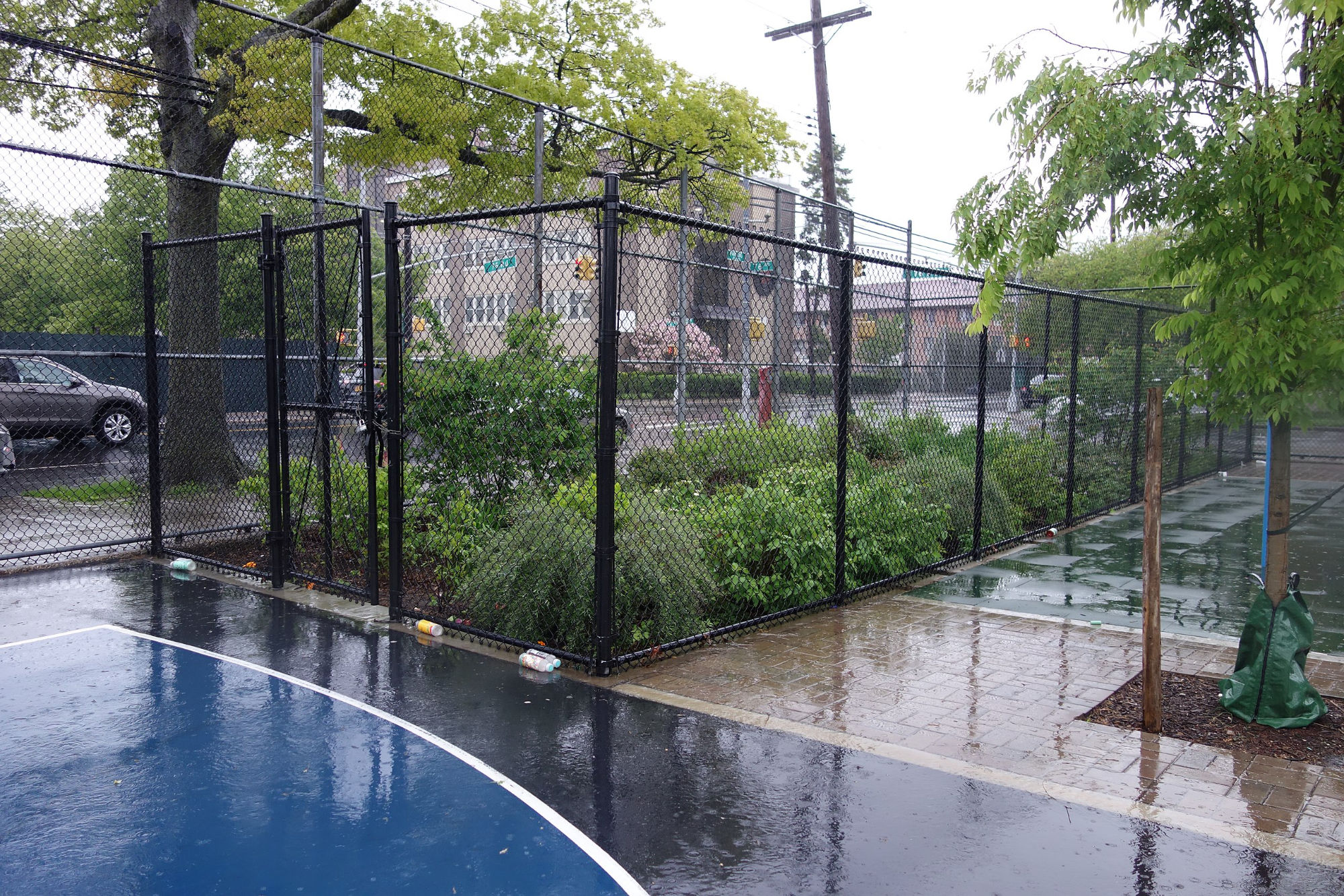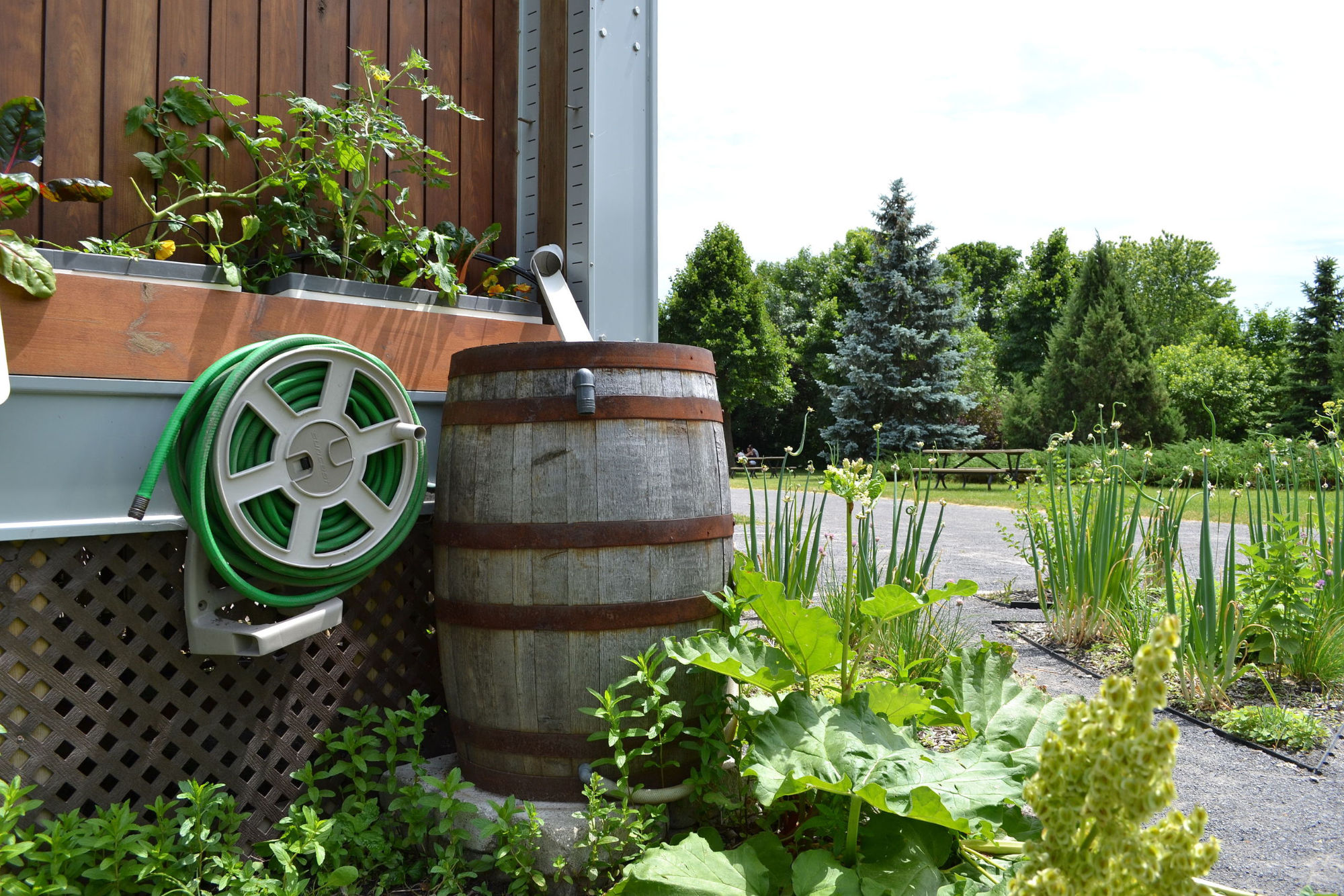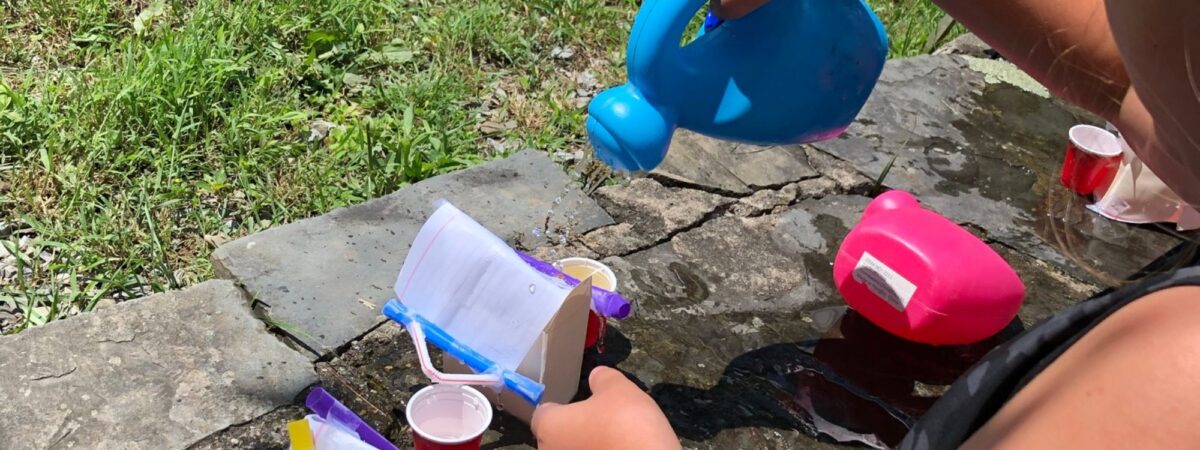Overview
Our climate is changing, and most parts of the United States are experiencing more heavy rainfalls than in the mid-20th century, as a result of a warming atmosphere. Heavy downpours can lead to flooding, which can be catastrophic. We need to reduce our greenhouse gas emissions to slow or stop the atmosphere from heating up, and we also need to learn to cope with climate change and become more resilient to climate hazards. This activity focuses on adapting to climate change and building resilience to heavy rainfalls, in the context of rainfall that lands on a building.
Introduction
Students build small paper houses and design and build structures such as gutters and rain gardens to divert and capture rainwater. They then test their designs with simulated rain using watering cans.
Grade Level
K-5
Learning Objectives
Students will
- learn through play (building miniature structures, playing with water)
- learn that our climate is changing
- problem solve and be creative
- build and test ideas, developing fine motor skills through the building process
Lesson Format
The building part of this activity can be done indoors, but the testing part is best done outdoors because it involves pouring water to simulate rain, so things get very wet.
Time Required
30 - 45 minutes. The building process may take longer for younger children.
Standards
NGSS
- Generate and compare multiple solutions to reduce the impacts of natural Earth processes on humans. 4-ESS3-2
- Make a claim about the merit of a design solution that reduces the impacts of a weather-related hazard. 3-ESS3-1
- Compare multiple solutions designed to slow or prevent wind or water from changing the shape of the land. 2-ESS2-1
Credits & Contact Info
Dr. Ingrid Zabel
Paleontological Research Institution, 1259 Trumansburg Rd., Ithaca NY 14850
zabel@priweb.org
Instructions & Materials
Materials
- Paper house templates (download Paper house templates, print on card stock or other heavy paper, and then students can cut)
- Large (4” x 6”) index cards for house roofs (or cut out 4” x 6” pieces of card stock)
- Wide straws (smoothie straws) to simulate gutters and downspouts. Regular straws could work as well.
- Small cups (bathroom cups) to simulate rain barrels
- Sponges to simulate rain gardens
- Tape
- Scissors
- Water
- Small watering cans or some other means of sprinkling water to simulate rain

Instructions
Introduction (10 minutes)
- Present & discuss introductory information about climate, heavy rainfalls as an example of climate change. See Background & Extensions section for information. Introduce the idea that heavy rainfalls can lead to flooding, which could damage buildings.
- Explain the activity: tell the students that you will be giving them some supplies to build a miniature house and then they will come up with some ways to protect that house from flooding in heavy rain. They will then get to build those ideas and test them by sprinkling water over their houses.
- Show them the house & roof template and demonstrate how to fold it and tape it together to build a house.
- Cut along the dashed lines and fold the house along the solid lines. Tape the end of the house together after folding. Roof: the 4"x6" piece of paper should be folded in half on the long edge, then taped to the top of the house.
- You could ask students for examples of how houses are protected from rain, and they might mention things like gutters and downspouts. If they don't think of these ideas you can direct them to think about it. Show them the small cups and explain the concept of a rain barrel as a way to capture rain (and to have water available to water gardens during dry times). [NOTE: rainwater harvesting is restricted in some states; please check your local regulations and decide if you want to include this component, and discuss why or why not people can harvest rain.]
- Another solution to direct them to think about is how soil and plants soak up water, so ask them to think about how they could use a garden area with plants to capture rain. Show them the sponges that can simulate soil and plants soaking up rain.
- Show them the house & roof template and demonstrate how to fold it and tape it together to build a house.
- Provide all the materials and have the students start working. You can ask them to specifically design systems that will capture rain from the roof and divert it to the rain barrel (cup) and/or a garden (sponge).
- When complete, take the houses outdoors and have the students sprinkle water on the houses to simulate rain.
Discussion question
- What solutions did you try, and why?
- What worked well and what didn’t?
- If you used a sponge as a garden, did it work as well when it was full of water (saturated) as it did when it was dry or just a little wet?
- Large amounts of rain can saturate soil, and this can lead to flooding when the soil doesn't have the capacity to absorb any more water.
- The sponge was used to simulate a garden, but there are lots of different types of landscape surfaces that people might have around houses or buildings: flower beds, vegetable gardens, trees, grassy lawn, etc. Which do you think would be most effective at soaking up rain?
- Interesting fact: a large oak tree can divert more than 40,000 gallons of water a year from the ground to the air, through a process called transpiration. Trees soak up water through their roots, move it upward through their trunk and branches, and then some water evaporates through tiny pores in the leaves.
- What’s different about what happens to rain that falls on a hard surface, like pavement, instead of on a surface with plants?
Teaching Tip
Younger students may need help cutting the straws. They may also benefit from guidance in thinking about how to capture rain all along a roof (i.e., with a horizontal gutter) instead of at just one point on a roof (i.e., with a vertical gutter).
Background & Extensions
Climate change and rainfall
Our climate is the average and range of weather conditions that we experience. For example, in New York State we have a climate with four seasons, with warm summers and cold, snowy winters. We usually have plenty of rainfall, and we sometimes get severe storms. Other places in the world have climates that are very different from ours. For example, many parts of Central America have only two seasons: a wet season and a dry season, and they almost never have snow.
Climates are changing around the world, mainly because of gases that we release into the air when we burn coal, oil, and natural gas (called fossil fuels because they come from the remains of ancient plants.) These gases heat the planet. Here in New York State, one of the main changes is that we’re getting more heavy rainfalls. A heavy rainfall is when a lot of rain falls in a short amount of time; often defined as more than 1 inch in a 24-hour period. We’re experiencing more heavy rainfalls because the air is warming, and warmer air can hold more moisture than cooler air, so when it rains there’s more water available to fall.
Heavy rainfalls can be dangerous because they can cause flooding that harms people and animals and damages buildings, roads, and other built structures, along with damaging habitats and ecosystems.
"Green" and "grey" infrastructure for stormwater management
People have developed a variety of methods to try to prevent flooding when heavy rains fall. "Grey" infrastructure refers to hard, human-built structures such as gutters, rain barrels, storm sewers, drainage channels, and permeable pavement. Note that the activity above has students using rain barrels, but harvesting rainwater is restricted in some states; please check your local regulations.
"Green" infrastructure refers to nature-based solutions that benefit from the functions of natural systems, such as the ability of plants to soak up rainwater and pollutants. You can find examples of both grey and green infrastructure solutions on Syracuse, NY's Save the Rain website.


Rain barrel at the Ecological Solar House, located on the Saint Helen's Island, Montreal, Canada. Photo by Benoit Rochon (CC BY 3.0) via Wikimedia Commons
School rain garden
Older students could go online and research the concept of a rain garden. Could you build a rain garden at your school?
You will find many excellent online resources on how to design, install, and maintain a rain garden, including ones with a focus on school gardens. Some examples:
- Stormwater Management in your Schoolyard (Rutgers University)
- Rain Garden Manual of New Jersey (Rutgers University)
- Rain Gardens for Schools (12000RainGardens.org)
- Rain Gardens (University of Connecticut)
- Ask Mr. Smarty Plants (Lady Bird Johnson Wildflower Center) is an ask-the-expert tool where you might get answers about rain garden plants appropriate for your region.
Learn More
Climate Change Adaptation chapter of The Teacher-Friendly Guideᵀᴹ to Climate Change on the Digital Encyclopedia of Earth Science



